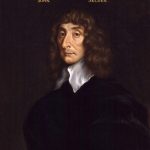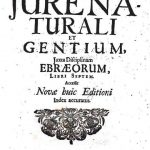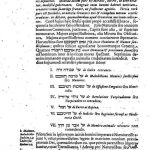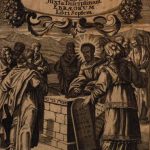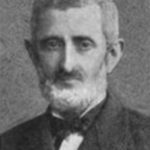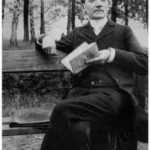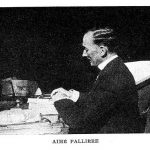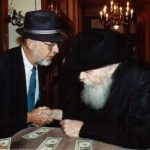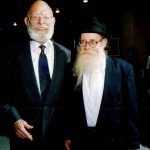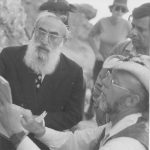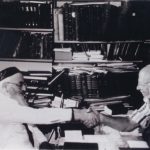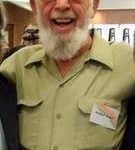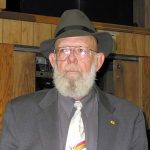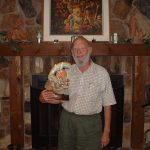The History of the Noachide Code
The History of the Noachide Code
Early Biblical times…
The code of Divine Law that we now know as the ‘Seven Commandments of the Descendants of Noah’, has been with mankind since the creation of the first man, Adam.
“Six precepts were commanded to Adam: prohibitions against the worship of false gods; cursing G-d; murder; incest and adultery; theft; and the command to establish laws and courts of justice. The prohibition against eating flesh from a living animal was added for Noah, as [Genesis 9:4] states: “Nevertheless, you may not eat flesh with its life, which is its blood.” Thus there are seven commandments for the descendants of Noah. These matters remained the same throughout the world until Abraham.”(Maimonides/Rambam – Mishneh Torah, Hilchos Melachim [The Laws of Kings] Chapter 9, law 1).Later on at Mount Sinai:
“Moses was commanded by the Almighty [at Mount Sinai] to compel all the inhabitants of the world to accept the commandments given to Noah’s descendants.”(Maimonides/Rambam – Mishneh Torah, Hilchos Melachim [The Laws of Kings] Chapter 8, law 10).After the flood, Shem the son of Noah and his grandson Eber, founded a city, they named this city Shalem (peace). Today we call it Jerusalem, the city of peace. It was here that they also founded their ‘House of Study’ for the purpose of understanding and fulfilling the Noachide Commandments. It was known as the ‘Yeshiva of Shem v’Ever’.
The Bible records that after a great battle, Abraham was on his way home and as he passed Shalem, its king Melchizedek came out to greet him. According to Jewish tradition this Melchizedek was none other than Shem, the son of Noah. Melchizedek means the ‘King of Righteousness who rules over peace’ (Salem=Shalom). (ref. Gen. 14:18)
During the periods when the Jewish people lived in the Holy Land, their responsibility for teaching the Gentiles the Seven Commandments was generally fulfilled. During the years that the Temple in Jerusalem stood, Gentiles who wanted to dwell in the Land of Israel had to agree to fulfill the Noahide Laws, and had the right to come to the Holy Temple and offer sacrifices to G-d (Zech. 14:17-18).The Sages of the Talmud preserved the Seven Noahide Commandments. Here are some parts of the Talmud that discuss Noachide law:
In Roman times…
In Roman times Bnei Noach where sometimes known as ‘G-d fearers’ or ‘Fearers of Heaven’ (Yirei Shamayim in Hebrew). Variously called Theosebeians, Sebomenoi or Phobeomenoi in Greek. This is documented in the works of Josephus:‘[the Antiochian Jews] were constantly attracting to their religious ceremonies multitudes of Greeks, and these they had in some measure incorporated with themselves’ (Josephus, BJ 7.45).
‘But no one need wonder that there was so much wealth in our temple, for all the Jews throughout the habitable world, and fearers of God, even those from Asia and Europe, had been contributing to it for a very long time’ (Josephus, Ant. 14.110).
The most important archaeological evidence of an ancient Noahide community was discovered in 1976 in Aphrodisias, Turkey. Two inscriptions (see pictures at: https://aphrodisias-excavations.com/jewish-community/), dating from approximately 210 C.E., were discovered in an ancient synagogue. The first inscription is a list of synagogue founders, all with Jewish names common to the period. The second inscription, however, is a list of non-Jewish names such as Zeno, Athenogoras, and Diogenes. This inscription is prefaced with the words: “And these are those who are God Fearers…” A similar inscription was discovered in the ancient ruined synagogue of Sardis, Turkey. This inscription lists three groups: Jews, converts, and observers of the Noahide laws. See: http://en.wikipedia.org/wiki/God-fearer
The Roman Emperor Antoninus:
Throughout history there have been Gentiles whose piety and reverence for the G-d of Israel have become legendary. One of the most famous individuals was Antoninus, a Roman governor of the land of Israel around the year 170 C.E. He was also a secret student of Rabbi Yehuda HaNasi, the Prince of Israel at that time. Rabbi Yehuda is also famous for being the codifier of the Oral tradition in the work known as the Mishnah. Antoninus is an excellent example of a Righteous Gentile. Although due to severe Roman anti-Semitism he had to conceal his studies with Rabbi Yehuda, nonetheless, their friendship was well known and respected. So highly did Rabbi Yehuda view the piety of Antoninus that the Talmud relates that Rabbi Yehuda taught him many of the secrets of the Torah. It is suspected that either the Emperor Antoninus Pius or more likely the Emperor Marcus Aurelius Antoninus (the author of ‘Meditations’) was the Antoninus who was the friend of Rabbi Yehuda the Prince, and this Antoninus would consult Rabbi Yehuda on various worldly and spiritual matters. According to the Talmud (Avodah Zarah 10a-b), Rabbi Yehuda was very wealthy and greatly revered in Rome.
See the book: The Prince and the Emperors: The Life and Times of Rabbi Judah the Prince.
Circa 1000 C.E. …
In the tenth century Rabbi Samuel ben Hofni expanded the 7 Noachide commandments to the 30 laws that are mentioned in the Talmud (Chullin 92a). His list of the 30 laws were found in the Cairo Genizah.Rabbi Samuel ben Hofni the Gaon was head of the Yeshiva of Sura in Baghdad during the cultural renaissance which characterized the Buyid period. His writings reflect the impact of Arabic literature on Jewish intellectuals at this time.
Reference:
- Chabad.org – Rav Shmuel bar Hofnii
- Book by A. Greenbaum, ‘Thirty Commandments According to R. Samuel ben Hofni.’ Published in Hebrew, Sinai, 1973.
- Encyclopedia Talmudica, Vol.3, in the section headed ‘Ben Noah’.
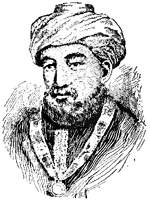
Maimonides or Rabbi Moses ben Maimon (or The ‘Rambam’ for short), 1135-1204, was one of the greatest ever Rabbis, chief Rabbi of Egypt and personal physician to Saladin, the Sultan of Egypt and Syria. The Rambam wrote a code of Jewish Law called ‘Mishneh Torah’, and it contains the first major codification of the Noahide comandments in it: Hilchos Melachim [The Laws of Kings] chapters 8, 9 & 10.
In 1593 c.e. …
The Rev. Richard Hooker was an English Priest in the Church of England, and he wrote ‘The Laws of Ecclesiasticall Politie’, which was published in London in 1593. In it he compared the ‘seven precepts of the sons of Noah’ to the Christian laws in Acts 15: 28-9.Ref: https://en.wikipedia.org/wiki/Richard_HookerHis book ‘Of the laws of ecclesiastical polity’ is online here, see page 398.In 1625 C.E. …
Hugo de Groot (Grotius) (1583-1645), Dutch legal philosopher and christian apologist, wrote in his book ‘De jure belli ac pacis’ (On the rights of war and peace):
‘In the Hebrew sources we find of the ‘pious ones of the Gentiles,’ as the Talmud describes them. These, as the Jewish teachers themselves declare, are bound to observe the laws given to Adam and Noah, to abstain from idols, from blood, and from other things which will be mentioned further.’ Quoted from The Seven Colors of the Rainbow by Rabbi Yirmeyahu Bindman
It was published in 1625 c.e.
Article about Grotius on Wikipedia.
In 1640 C. E …
John Selden (1584-1654) an English lawyer, Member of Parliament and scholar who knew Hebrew. Wrote a Latin book about the ‘Praecepta Noachidarum’ called ‘De jure naturali et gentium, juxta disciplinium ebraorum’ (On natural and Gentile law, compared with Hebrew principles). Published in 1640 c.e.
In chapter 7 he states:
‘Sextum juris Noachidarum…quod de judiciis est, atque enumerationem ex Talmudicis aliquot. Quod igitur in enumeratione illa Septumum est, eber min ha-chai, quo crudelitas immanis in animalia cetera vetatur.’(Six of the Noachide laws, those of judicial significance, are enumerated first in the Talmud among other sources. The seventh is therefore the prohibition of ‘the limb of a living animal’, which forbids cruelty to animals). Quoted from The Seven Colors of the Rainbow by Rabbi Yirmeyahu Bindman.- Article about John Selden on Wikipedia.
- The entire Latin book is online here for free!
- John Selden and the Biblical Origins of the Modern International Political System, by Abraham Berkowitz. Jewish Political Studies Review 1994.
In 1649 C. E. …
Rabbi Menachem Azaria de Fano 1548-1620 (also known as the REMA mi’PANU רמ״ע מפאנו) also expanded the 7 Noachide commandments to the 30 laws that are mentioned in the Talmud (Chullin 92a). In his book ספר עשרה מאמרות Asarah Ma’amaros, Ma’amar Chikur Din 3:21 מאמר חקור דין ־ חלק ג פרק כא (Published in Amsterdam 1649). See his version of the 30 Noachide laws on this page.
Link to an article about him on Chabad.org.
His book Asarah Maamarot is online here for free!

In the late 17th century…
Recently revealed papers of Sir Isaac Newton 1643–1727 show that he believed in G-d and in the divinity of the Hebrew Bible, but denied the ‘trinity’! He also studied the Talmud and Maimonides and had a copy of John Seldon’s book in his library!
In his book “Irenicum” Newton states:
“All nations were originally of the Religion comprehended in the Precepts of the sons of Noah, the chief of which were [1] to have one God, & not to alienate his worship, [2] nor prophane his name; [3] to abstein from murder, [4] theft, [5] fornication, & all injuries; [6] not to feed on the flesh or drink the blood of a living animal, but to be mercifull even to bruit beasts; & [7] to set up Courts of justice in all cities & societies for putting these laws in execution. In the ancient cities the Iudges usually sat in the Gates of the city & were called the Elders of the city & judged of causes both sacred & civil & the father of every family was the elder of the family subordinate to the Elders of the city. This religion descended to Melchisedec & Iob & to Abraham Isaac Iacob Moses & the Israelites & to the proselites of the Gate. ffor so the Israelites called the strangers within their Gates who observed the precepts of the sons of Noah. But the Kings of the nations by degrees causing their dead ancestors to be celebrated with sacrifices praises & invocations, the religion of Noah & his sons passed into the worship of dead men & the laws of their courts of Iustice into the moral Philosophy of the heathens. . ffor Pythagoras one of the oldest Philosophers in Europe, after he had travelled among the eastern nations for the sake of knowledge & conversed with their Priests & Iudges & seen their manners, taught his scholars that all men should be friends to all men & even to bruit Beasts & should conciliate the friendship of the Gods by piety, & that a friend was another self, & his disciples were celebrated for loving one another. The religion of Noah & his sons was therefore the moral law of all nations put in execution by their courts of Iustice untill they corrupted themselves.”
- Article about him on Wikipedia
- www.isaac-newton.org
- www.isaacnewton.ca
- Newton’s Secrets Exhibition in the Jewish National and University Library
- An example of Newtons writing about the Noachide Precepts: The Question stated about absteining from blood. by Isaac Newton
- Online book: Judaism in the Theology of Sir Isaac Newton
- Aish.com: Sir Isaac Newton and Judaism
- The Newton You Never Knew, by Dr Arnie Gotfryd
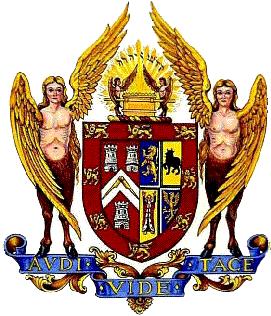
In 1738 C. E. …
‘The Constitutions of the Freemasons’, (second edition) by Rev. Bro. James Anderson, D.D.. Published by the Grand Lodge of England in 1738.
The Old Charges of the Free and Accepted Masons: Charge 1 – Concerning G-d and Religion.
“A Mason is obliged by his tenure to observe the moral law as a true Noachida*; and if he rightly understands the Craft, he will never be a stupid Atheist nor an irreligious Libertine, nor act against conscience. In ancient Times, the Christian Masons were charged to comply with the Christian usages of each country where they traveled or worked; being found in all nations, even of divers religions. They are generally charged to adhere to that religion in which all men agree (leaving each brother to his own particular opinion); that is, to be good men and true, men of honour and honesty, by whatever names, religions, or persuasions they may be distinguished; for they all agree in the three great Articles of Noah, enough to preserve the cement of the lodge. Thus Masonry is the Center of Union, and the happy means of conciliating persons that otherwise must have remained at a perpetual distance.”
*Noachidae or Sons of Noah was the first name of Masons according to old traditions.
- The United Grand Lodge of England – Ugle.org.uk
- The Grand Lodge of Scotland – GrandLodgeScotland.com
- The Grand Lodge of the State of Israel – Freemasonry-israel.org.il
In 1834 C. E. …
In 1834, Rabbi Tobias Goodman of London published a book called ‘Emunas Israel‘ or ‘The Faith of Israel’, of which the Fourth Treatise is entitled: ‘On the Seven Precepts commanded to the Sons of Noah’ (page 114).
The Faith of Israel, is a philosophical work, written in English in defense of Judaism, by Rabbi Tobias Goodman, who was a Rav in London at the beginning of the 19th century. He is famous for being the first Rabbi in England who delivered sermons in English in the Synagogue. This sefer is the first of its kind, and was written to protect Judaism among Jews from Christians and Reformists. This is the first and only edition of this sefer. It was privately published by the author on the money donated to him by the great Moses Montefiore, to whom a letter of thanks is printed in the front of the book.
Download the entire book Emunas Israel for free.
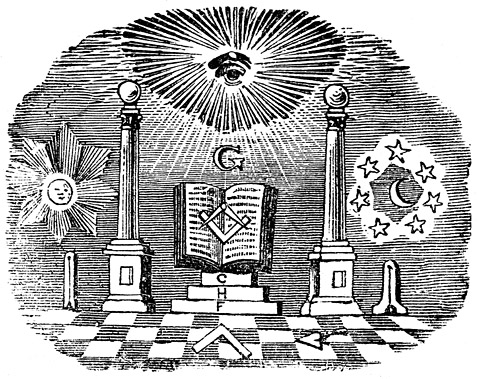
In 1845 C. E. …
From ‘A Lexicon of Freemasonry’, by Bro. Dr. Albert G. MacKey M. D., Published in 1845.
Noachidæ, or Noachites – The descendants of Noah. A term applied to Freemasons. Noah having alone preserved the true name and worship of God, amid a race of impious idolaters, Freemasons claim to be his descendants, because they still preserve that pure religion which distinguished this second father of the human race from the rest of the world. And even when his descendants began again, in the plains of Shinar, to forget the Almighty, and to wander from the path of purity, the principles of Noah were still perpetuated by that portion of his race whom the Freemasons of the present day regard as their early predecessors. Hence Freemasons call themselves Noachidæ, or the sons of Noah.
Noah, Precepts of. – The precepts of the patriarch Noah, which were preserved as the constitutions of our ancient brethren, are seven in number, and are as follows:
- Renounce all idols.
- Worship the only true God.
- Commit no murder.
- Be not defiled by incest.
- Do not steal.
- Be just.
- Eat no flesh with blood in it.
The “proselytes of the gate,” as the Jews termed those who lived among them without undergoing circumcision, or observing the ceremonial law, were bound to obey the seven precepts of Noah.

In 1877 C. E. …
From ‘The Royal Masonic Cyclopaedia’ by Bro. Kenneth MacKenzie. Published in 1877.
Noachidæ. – Descendants of Noah. Applied in Masonic legend to the Craft in general, as being derived from Noah, traditionally claimed as the founder and father of Masonic theology, according to some theories, because the Masons preserved the traditions of the one God amidst the corruptions of surrounding faiths. In the second edition of Anderson’s “Constitutions” we read – “A Mason is obliged by his tenure to observe the moral law as a true Noachida.”
Noah, Precepts of. – Certain commandments transmitted to our times in documents of the ancient stonemasons, of no historical value, are thus called. They are-
- Renounce all idols;
- Worship the only true God;
- Commit no murder;
- Be not defiled with incest;
- Do not steal;
- Be just;
- Eat no flesh with blood in it.
These have been preserved in the Talmud. Maimonides says that the first six precepts were enunciated by Adam, and the seventh by Noah. They are not mentioned by Onkelos, Josephus, or Philo; still, they have been adopted by the Rabbins.
In the last years of the 19th century…
Aimé Pallière (1868-1949), was a French Catholic Priest who became disillusioned with the Christian doctrine and after reading some books on Judaism, considered conversion to Judaism until Rabbi Elijah Benamozeg (1823-1900), the Rabbi of Leghorn/Livorno in Italy, taught him the Seven Noachide Commandments. Rabbi Benamozegh wrote to Palliere saying:
“We Jews have in our keeping the religion destined for the entire human race, the only religion to which the Gentiles shall be subject and by which they are to be saved, truly by the Grace of G-d, as were our patriarchs before the Law. Could you suppose that the true religion, that which G-d destines for all humanity, dates only from Moses, and carries the impress of a special people? What an error! Learn that the plan of G-d is vaster. The religion of humanity is no other than Noachism, not that it was instituted by Noah, but because it dates from the covenant made by G-d with humanity in the person of this just man. This is the path that lies open before your efforts, before mine as well, to spread the knowledge thereof, as it is my duty to do.” – The Unknown Sanctuary, page 134.
They both wrote books on the subject:
The book ‘Israel et l’Humanité’ by Rabbi Elijah Benamozeg (edited by Aime Palliere) was published in 1914 in French. An English translation was published in 1995 by Maxwell Luria: Elijah Benamozegh: Israel and Humanity – available on Amazon.
Le Sanctuaire Inconnu or The Unknown Sanctuary: A Pilgrimage from Rome to Israel, by Aimé Pallière was published in 1928. Available on Amazon. It’s free In English online here and in the French original here
During the 20th Century…
Rabbi Yonasan Steif (1877–1958) who was a senior Rabbi in Budapest, Hungary before the Second World Ward and was known as the Wiener Rov (rabbi of Vienna) in Williamsburg in New York afterwards, wrote a book abotr the Noachide Commandments called Sefer Mitsvos Ha-Shem, “The Book of God’s Commandments”.
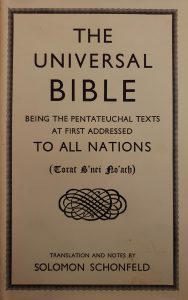
In 1955…
THE UNIVERSAL BIBLE being the Pentateuchal Texts at first addressed to all Nations (Torat B’nei No’ach) Teaching for the Sons of Noah, by Rabbi Solomon Schonfeld. Sidgwick & Jackson, London, 1955.
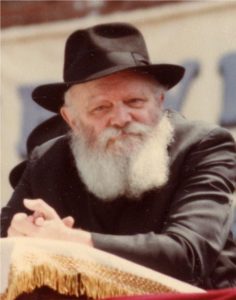
From 1951 C. E. onwards…
The Lubavitcher Rebbe, Rabbi Menachem Mendel Schneerson (1902-1994), began his leadership of the Chabad-Lubavitch movement in 1951, and throughout his career he repeatedly called the nations of the world to fulfill their seven commandments and for Jewish people to inform and influence gentiles to observe them.
The Seven Laws of Noah – Chabad.org
In 1999 a book called ‘Kol Boei Olam’ (כל באי העולם) (All Inhabitants of the World) was compiled by Rabbi Chaim Miller, and published by Vaad Migola L’Geulah, Brooklyn N.Y. It is a detailed compilation of the Lubavitcher Rebbe’s teaching on Noachide Halacha and Hashkafa. Unfortunately it has not been translated into English. However in 2016 a new book was: To Perfect the World, The Lubavitcher Rebbe’s Call to Teach the Noahide Code to All Mankind, by Rabbi Yehoishophot Oliver.
These three biographies of the Lubavitcher Rebbe have very interesting explanations of his involvement in the Noachide movement:
My Rebbe, by Rabbi Adin Steinsaltz
Turning Judaism Outwards: A Biography of the Rebbe, Menachem Mendel Schneerson, by Rabbi Chaim Miller
Rebbe: The Life and Teachings of Menachem M. Schneerson, the Most Influential Rabbi in Modern History, by Rabbi Joseph Telushkin
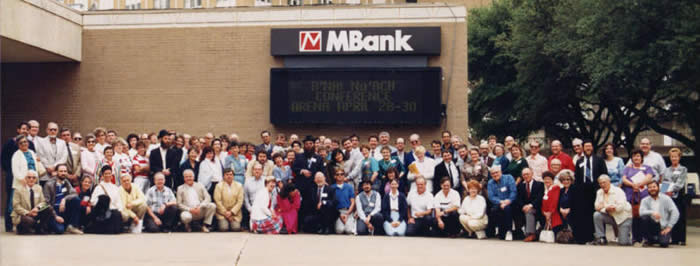
The worlds first Bnai Noach Conference, held in Fort Worth, Texas, 28-30th April 1990.
1956 ce…
Rev. Vendyl Jones, of blessed memory (1930-2010) was a Southern Baptist preacher and in 1956 he became disillusioned with Christianity and approached Rabbi Henry Barneis of Greenville, South Carolina with the aim of studying Torah, and Rabbi Barneis agreed to teach him on the condition that he learn the Seven Laws of Noah. In the 1960’s Vendyl moved to Israel and continued his studies at the Hebrew University and took up Biblical Archeology and specialized in studying the Copper Scroll and Qumran. Vendyl formed an organization called ‘The Institute for Judaic-Christian Research (IJCR). In 1983 two other Southern Baptist preachers, Rev. Jack Saunders and Rev. J David Davis, contacted Vendyl and began trying to reconcile Christian doctrine with Torah, but after discovering a book called ‘Jesus the Pharisee: A New Look at the Jewishness of Jesus’, by Rabbi Harvey Falk, which quotes Rabbi Yakov of Emden explaining how the Noahide Commandments relate to Christians, they too renounced Christianity and became observant Noahides. Then in 1989 they contacted Rabbi Michael Katz of Chattanooga, Tennessee and began to study the Noahide Covenant with him. Vendyl later changed his organization, the IJCR, to the VJRI (Vendyl Jones Research Institutes) and lead many people to discover the Noachide Commandments. In 1989 Vendyl met with the Sephardic Chief Rabbi, Rav Mordechai Eliyahu in Israel and discussed setting up an official Noachide Organization, to be called ‘Agudat Bnai Noah’. In 1990 Vendyl, under the authority of Rav Eliyahu, organized the first International Noahide Convention in Fort Worth, Texas and many Rabbis attended, including Rabbi Meir Kahane z”l Hy”d, and Rabbi Menachem Burstin representing Rav Mordechai Eliyahu. On 1st July 1990, Vendyl went and visited the Lubavitcher Rebbe at “Dollars” in 770, and the Rebbe told Vendyl, “You are doing the most important work in the world. Many obstacles will come before you and try to make you change what you are doing. Do not change anything you are doing. G-d bless you, G-d bless you, G-d bless you.” Around this time the now Noahide communities of The Frazier’s Chapel, Cleveland, Tennessee and The Emmanuel Community, Athens, Tennessee, publicly removed the steeples from their chapels and turned them into B’nei Noah Study Centers. Vendyl went on to hold many other Noahide Conferences in America and formed a large following and inspired many people.
Ref: https://en.wikipedia.org/wiki/Vendyl_Jones
Vendyl Jones was the author of “Will the real jesus please stand?” and “A Door Of Hope: My Search For The Treasures Of The Copper Scroll”.
J David Davis was the author of “Finding the God of Noah: The Spiritual Journey of a Baptist Minister From Christianity to the Laws of Noah”..
Also see how things emerged in this book: “Turning to Torah: The Emerging Noachide Movement” by Kim Hanke.
In 1991 in the US Congress…
In 1991, Chabad-Lubavitch in cooperation with President George Bush sr established the observance of Education Day, USA “to return the world to the moral and ethical values contained in the Seven Noahide Laws.” The US Congress also made the following proclamation:
Public Law 102–14 (H.J. Res. 104): March 20, 1991
Education Day, USA Proclamation
Joint Resolution to designate March 26, 1991 as “Education Day, USA”
- Whereas Congress recognizes the historical tradition of ethical values and principles which are the basis of civilized society and upon which our great Nation was founded;
- Whereas these ethical values and principles have been the bedrock of society from the dawn of civilization, when they were known as the Seven Noahide Laws;
- Whereas without these ethical values and principles the edifice of civilization stands in serious peril of returning to chaos;
- Whereas society is profoundly concerned with the recent weakening of these principles that has resulted in crises that beleaguer and threaten the fabric of civilized society;
- Whereas the justified preoccupation with these crises must not let the citizens of this Nation lose sight of their responsibility to transmit these ethical values from our distinguished past to the generations of the future;
- Whereas the Lubavitch movement has fostered and promoted these ethical values and principles throughout the world;
- Whereas Rabbi Menachem Mendel Schneerson, leader of the Lubavitch movement, is universally respected and revered and his eighty-ninth birthday falls on March 26, 1991;
- Whereas in tribute to this great spiritual leader, “the rebbe”, this, his ninetieth year will be seen as one of “education and giving”, the year in which we turn to education and charity to return the world to the moral and ethical values contained in the Seven Noahide Laws; and
- Whereas this will be reflected in an international scroll of honor signed by the President of the United States and other heads of state: Now, therefore be it resolved by the Senate and House of Representatives of the United States of America in Congress assembled, That March 26, 1991, the start of the ninetieth year of Rabbi Menachem Schneerson, leader of the worldwide Lubavitch movement, is designated as “Education Day. U.S.A.”. The President is requested to issue a proclamation calling upon the people of the United States to observe such day with appropriate ceremonies and activities.
- Approved March 20, 1991.
The books that brought about the modern noachide movement:
1914 – The book ‘Israel et l’Humanité’ by Rabbi Elijah Benamozeg was originally published in French. An English translation was published in 1995 by Maxwell Luria: Elijah Benamozegh: Israel and Humanity – available on Amazon.
1928 – The Unknown Sanctuary: A Pilgrimage from Rome to Israel, by Aimé Pallière. It’s free online here.
Date U/K – Sefer Mitzvot HaShem by Rabbi Yonoson Shteif, the Viener Rov (1877-1958), senior dayan of Budapest before the War, and NYC.
1950 – The Relationship Between the Jew and the Nations According to Maimonides, by Gershon Tchernowitz. Bitzaron, New York.
1955 – THE UNIVERSAL BIBLE being the Pentateuchal Texts at first addressed to all Nations (Torat B’nei No’ach) Teaching for the Sons of Noah, by Rabbi Solomon Schonfeld. Sidgwick & Jackson, London, 1955.
1973 – Thirty Commandments According to R. Samuel ben Hofni by A. Greenbaum (Hebrew).
1981 – The Seven Laws of Noah by Dr Aaron Lichtenstein
1983 – The Image of the Non-Jew in Judaism by David Novak
1987 – The Path of the Righteous Gentile: An Introduction to the Seven Laws of Noah by Rabbi Chaim Clorfene & Rabbi Yakov Rogalsky
1988 – A Light Unto the Nations (Or La’Amim) by Rabbi Yoel Schwartz. Yeshivat D’var Yerushalayim
1990 – Their Hollow Inheritance: A Comprehensive Refutation of xian Missionaries by Michoel Drazin. www.drazin.com
1995 – The Seven Colors of the Rainbow: Torah Ethics for Non-Jews by Rabbi Yirmeyahu Bindman
1995 – Elijah Benamozegh: Israel and Humanity by Maxwell Luria
1995 – Turning to Torah: The Emerging Noachide Movement by Kim Hanke.
1996 – Finding the God of Noah: The Spiritual Journey of a Baptist Minister From Christianity to the Laws of Noah, by J. David Davis.
1998 – Compassion for Humanity in the Jewish Tradition by Rabbi Dovid Sears
1999 – ‘Kol Boei Olam’ (כל באי העולם – All Inhabitants of the World), compiled by Rabbi Chaim Miller, and published by Vaad Migola L’Geulah, Brooklyn N.Y. It is a detailed compilation of the Lubavitcher Rebbe’s teaching on Noachide Halacha and Hashkafa. Unfortunately it has not been translated into English.
2003 – Perspectives on the Noahide Laws: Universal ethics by Rabbi Dr.Shimon Cowen
2007 – Kabbalah and Meditation for the Nations by Rabbi Yitzchak Ginsburgh www.inner.org/nonjews/intro.htm
2008 – Sefer Sheva Mitzvot HaShem (“The Book of Seven Divine Commandments”), Volume 1. – The New comprehensive codification of the Noahide Commandments. (Hebrew)
2008 – The Divine Code, Vol. 1. The Guide to Observing G-d’s Will for Mankind, Revealed from Mount Sinai in the Torah of Moses, by Rabbi Moshe Weiner. Edited by Dr. Michael Schulman2009 – Sefer Sheva Mitzvot HaShem, Volume 2.2009 – Prayers, Blessings, Principles of Faith, and Divine Service for Noahides, by Rabbi Moshe Weiner and Rabbi J. Immanuel Schochet2011 – The Divine Code, volume 1, second expanded edition. – www.asknoah.org2012 – World Unity – It’s no longer a dream! – Booklet by AskNoah2015 – The Theory and Practice of Universal Ethics – The Noahide Laws, by Rabbi Shimon Dovid Cowen.2016 – To Perfect the World, The Lubavitcher Rebbe’s Call to Teach the Noahide Code to All Mankind, by Rabbi Yehoishophot Oliver.2017 – Seven Gates of Righteous Knowledge: Spiritual Knowledge and Faith for the Noahide Movement and All Righteous Gentiles, By Rabbi Moshe Weiner.2018 – The Divine Code third Edition.Further Reading
